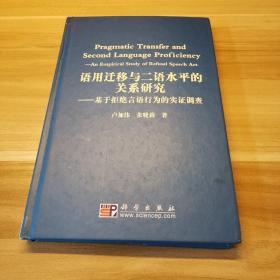
语用迁移与二语水平的关系研究:基于拒绝言语行为的实证调查
¥ 89.1 九品
仅1件
河南南阳
认证卖家担保交易快速发货售后保障
作者卢加伟、张晓莉 著
出版社科学出版社
出版时间2009-11
版次1
装帧精装
货号168
上书时间2019-10-31
- 在售商品 暂无
- 平均发货时间 5小时
- 好评率 暂无
- 店主推荐
- 最新上架
商品详情
- 品相描述:九品
图书标准信息
- 作者 卢加伟、张晓莉 著
- 出版社 科学出版社
- 出版时间 2009-11
- 版次 1
- ISBN 9787030258205
- 定价 35.00元
- 装帧 精装
- 开本 16开
- 纸张 胶版纸
- 页数 201页
- 字数 295千字
- 正文语种 英语
- 【内容简介】
-
语用迁移研究是二语习得领域的一个重要课题。二语水平是影响语用迁移诸多因素中最为明显的一个,但对语用迁移与二语水平之间关系的研究甚少,且仅有的几项研究结果对两者之间的关系争论较大。《语用迁移与二语水平的关系研究:基于拒绝言语行为的实证调查》对语用迁移的类别进行了重新界定,并在对比中美拒绝策略异同的基础上,通过跟踪考察一组中国大学生英语学习者拒绝言语行为的发展变化情况来研究二语水平与语用迁移的关系,并提出了一项语用迁移假说,为在大学英语教学中逐渐实施语用教学提供了理论和实践上的借鉴。
《语用迁移与二语水平的关系研究:基于拒绝言语行为的实证调查》适读于外语及对外汉语专业本科生、研究生,外语教师,语言教学和语言研究教育工作者。 - 【目录】
-
前言
Acknowledgements
导读
Chapter1Introduction
1.1OriginoftheResearch
1.2MethodoftheResearch
1.3OrganizationoftheBook
Chapter2LiteratureReview
2.1SpeechActTheory
2.2RefusalsacrossCultures
2.2.1RubinsStudy
2.2.2LiaoandBresnahansStudy
2.2.3Nelsonetal.sStudy
2.2.4WangAihuasStudy
2.3ConceptsofLanguageTransferandPragmaticTransfer
2.3.1LanguageTransfer
2.3.2PragmaticTransfer
2.4MajorStudiesonPragmaticTransferinSpeechActs
2.4.1StudiesonPragmaticTransferinOtherSpeechActs
2.4.2StudiesonPragmaticTransferinRefusalSpeechAct
2.5StudiesontheRelationshipbetweenL2ProficiencyandPragmaticTransfer
Chapter3ResearchDesignandTheoreticalFramework
3.1ResearchQuestions
3.2ResearchMethodology
3.2.1Subjects
3.2.2Instruments
3.2.3DataAnalysis
3.3AnOperationalCriterionforDiscussingPragmaticTransfer
3.3.1NecessaryEvidenceforIdentifyingtheOccurrenceofPra~naticTransfer
3.3.2ABasicPrincipleforPragmaticTransferIdentification
3.3.3DefiningtheDegreeofDiscrepancy
3.3.4PragmaticTransferReclassified
3.4AHypothesisontheRelationshipbetweenL2LinguisticProficiencyandL1PragmaticTransfer
3.4.1AWorkingCriteriontoJudgetheRelationshipbetweenL2LinguisticProficiencyandL1PragmaticTransfer
3.4.2AHypothesisontheRelationshipbetweenL2LinguisticProficiencyandL1PragmaticTransfer
3.5MainTheoriesEmployedinDiscussingPragmaticTransfer
3.5.1PolitenessTheory
3.5.2GilesAccommodationTheory
3.6AGeneralResearchProcedureoftheStudy
Chapter4PragmaticTransferinChineseEFLLearnersRefusals
4.1EvidencesofPragmaticTransferintheFrequencyofSemanticFormulas
4.1.1EvidencesofPragmaticTransferintheFrequencyofSemanticFormulasinRefusalstoRequests
4.1.2EvidencesofPragmaticTransferintheFrequencyofSemanticFormulasinRefusalstoInvitations
4.1.3EvidencesofPragmaticTransferintheFrequencyofSemanticFormulasinRefusalstoSuggestions
4.1.4EvidencesofPragmaticTransferintheFrequencyofSemanticFormulasinRefusalstoOffers
4.2EvidencesofPragmaticTransferintheOrderofSemanticFormulas
4.2.1EvidencesofPragmaticTransferintheOrderofSemanticFormulasinRefusalstoRequests
4.2.2EvidencesofPragmaticTransferintheOrderofSemanticFormulasinRefusalstoInvitations
4.2.3EvidencesofPragmaticTransferintheOrderofSemanticFormulasinRefusalstoSuggestions
4.2.4EvidencesofPragmaticTransferintheOrderofSemanticFormulasinRefusalstoOffers
4.3DiscussionsonPragmaticTransferinL2Refusals
4.3.1TypesofPragmaticTransferintheSpeechActofRefusal
4.3.2InfluencesofElicitingFactorsonPragmaticTransfer
Chapter5TheRelationshipbetweenL2ProficiencyandL1PragmaticTransfer
5.1TheRelationshipbetweenProficiencyandPragmaticTransferintheFrequencyofSemanticFormulasinEachRefusalElicitingFactor
5.1.1TheRelationshipintheFrequencyofSemanticFormulasinRefusalstoRequests
5.1.2TheRelationshipintheFrequencyofSemanticFormulasinRefusalstoInvitations
5.1.3TheRelationshipintheFrequencyofSemanticFormulasinRefusalstoSuggestions
5.1.4TheRelationshipintheFrequencyofSemanticFormulasinRefusalstoOffers
5.2TheRelationshipbetweenProficiencyandPragmaticTransferintheOrderofSemanticFormulasinEachRefusalElicitingFactor
5.2.1TheRelationshipintheOrderofSemanticFormulasinRefusalstoRequests
5.2.2TheRelationshipintheOrderofSemanticFormulasinRefusalstoInvitations
5.2.3TheRelationshipintheOrderofSemanticFormulasinRefusalstoSuggestions
5.2.4TheRelationshipintheOrderofSemanticFormulasinRefusalstoOffers
5.3DiscussionsontheRelationshipbetweenL2ProficiencyandL1PragmaticTransferintheRefusalSpeechAct
5.3.1TheInfluenceofElicitingFactorsontheRelationshipbetweenL2ProficiencyandL1PragmaticTransfer
5.3.2OtherFactorsAffectingtheRelationshipbetweenLinguisticProficiencyandPragmaticTransfer
5.3.3HypothesisTesting:theRelationshipbetweenL2ProficiencyandL1PragmaticTransfer
5.3.4TheAcquisitionExpectationfortheRelationshipbetweenL2ProficiencyandL1PragmaticTransfer:PositiveorNegative?
Chapter6CausalFactorsforPragmaticTransferandReassessmentofItsRoleinSLA
6.1CausalFactorsforPragmaticTransfer
6.1.1Learner-externalFactorsforPragmaticTransfer
6.1.2Learner-internalFactorsforPragmaticTransfer
6.2ReassessmentoftheRoleofPragmaticTransferinSLA
Chapter7MajorFindingsandProspectsforFutureStudies
7.1MajorFindingsofthePresentStudy
7.2SignificanceoftheResearch
7.3ProspectsforFutureStudiesonPragmaticTransfer
Bibliography
AppendixIDiscourseCompletionTest
AppendixIIDiscourseCompletionTest[ChineseVersion]
AppendixIIIClassificationofRefusals[Beebeetal.(1990)]
AppendixIVClassificationofRefusals(RevisedVersionforThisBook)
点击展开
点击收起
— 没有更多了 —


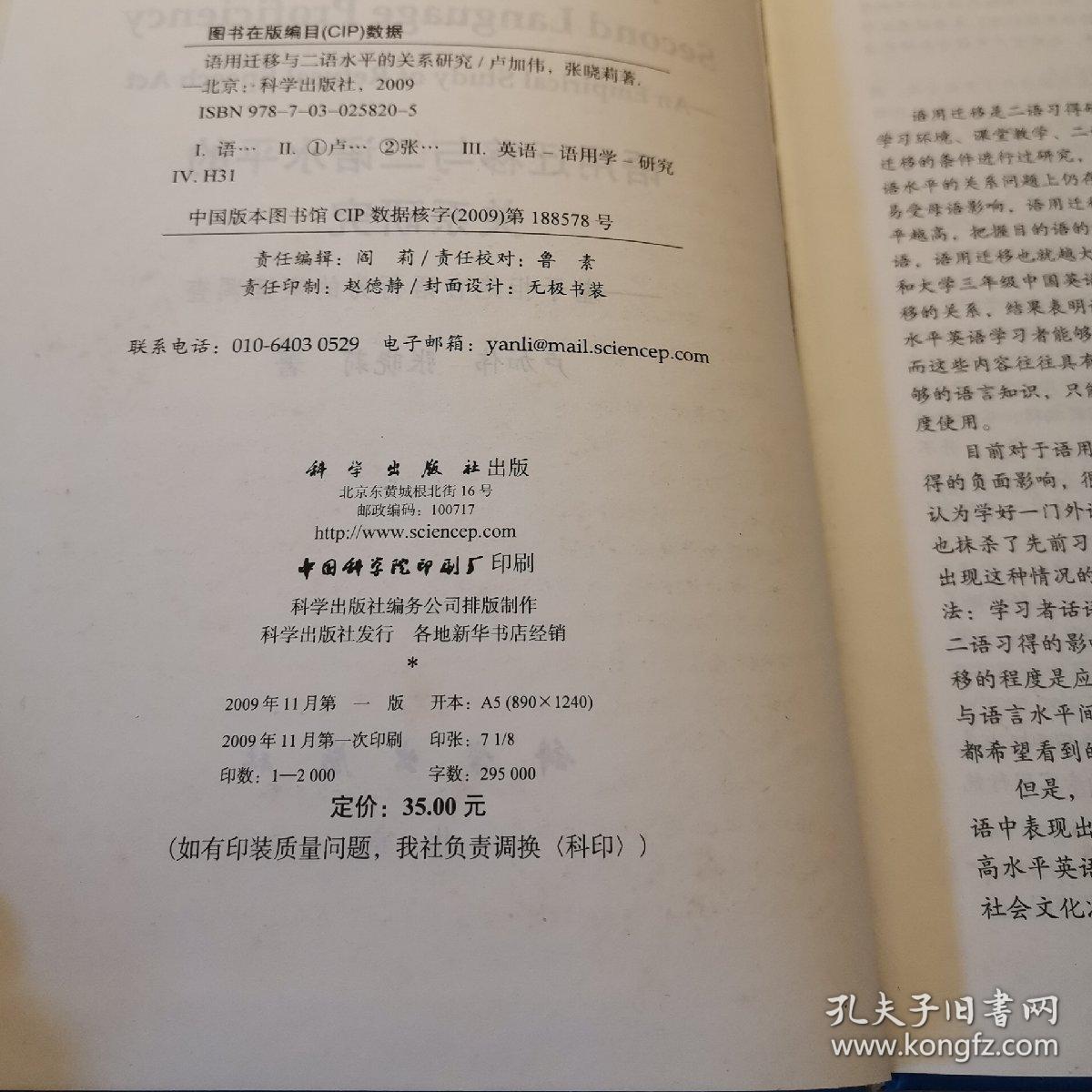





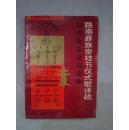
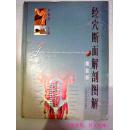











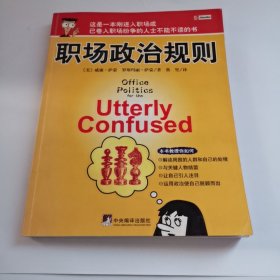
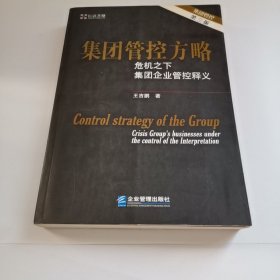
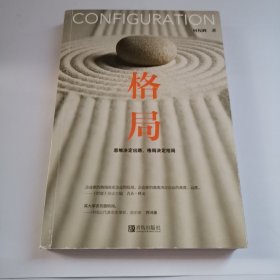

以下为对购买帮助不大的评价